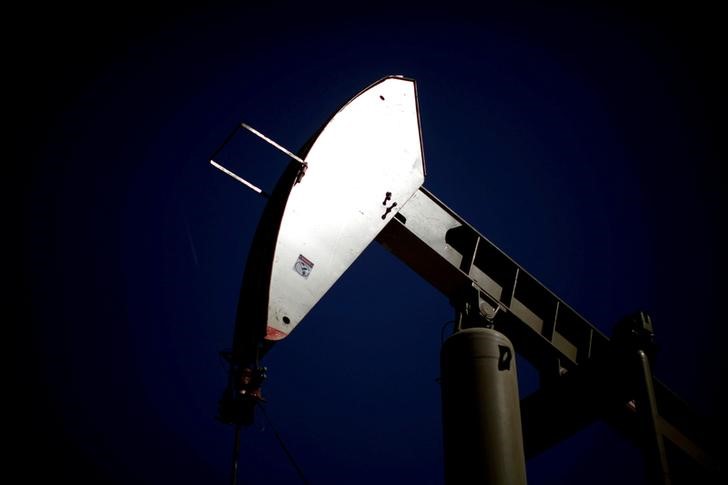
FILE PHOTO: A pumpjack brings oil to the surface in the Monterey Shale, California, April 29, 2013. REUTERS/Lucy Nicholson/File Photo
June 14, 2018
By Henning Gloystein
SINGAPORE (Reuters) – Oil prices eased on Thursday, dragged down by rising output and a decline in China’s refining activity, although strong fuel consumption in the United States and a drop in its crude inventories provided some support.
Brent crude futures <LCOc1> were at $76.45 per barrel by 0610 GMT, down 29 cents, or 0.4 percent, from their last close.
U.S. West Texas Intermediate (WTI) crude futures <CLc1> were at $66.57 a barrel, down 7 cents from their last settlement.
China on Thursday reported a drop in refinery activity, from 12.06 million barrels per day (bpd) in April to 11.93 million bpd in May, although year-on-year runs were still up by 8.2 percent.
The fall came as China’s industrial output, investment and retail sales all grew less than expected in May, data showed.
Also weighing on prices was another rise in U.S. oil production <C-OUT-T-EIA>, which hit a weekly record of 10.9 million bpd last week, according to the Energy Information Administration (EIA) on Wednesday.
U.S. crude output has risen almost 30 percent in the last two years, and is now close to top global producer Russia, which churned out 11.1 million bpd in the first two weeks of June.
U.S. output is now above that of top exporter Saudi Arabia, which produced slightly above 10 million bpd.
But the rising output came amid strong demand, which traders said prevented prices from falling further.
U.S. consumption of gasoline rose to a record 9.88 million bpd last week, according to the EIA.
U.S. crude inventories <C-STK-T-EIA> fell by 4.1 million barrels, to 432.4 million barrels.
To view a graphic on U.S. oil production, click: https://reut.rs/2JJiOzg
WORLD CUP MEET
The surge in American output puts pressure on other producers, who are losing market share.
Russian and Saudi production has been held back voluntarily since 2017, when the Organization of the Petroleum Exporting Countries (OPEC), together with some non-OPEC producers, including Russia, started supply cuts to prop up prices.
With Brent prices up by around 180 percent from their 2016 lows and demand strong, OPEC and Russia may soon end their voluntary supply cuts.
OPEC, together with Russia, will officially meet in Vienna on June 22 to discuss its production policy.
“We expect OPEC will agree to raise output and other non-OPEC countries party to the Declaration of Cooperation to follow suit,” Britain’s Barclays bank said on Thursday.
However, it added, “Barring a sharp global economic downturn, we think the risk to the downside is limited by lower spare capacity levels and geopolitical risks.”
OPEC’s de-facto leader Saudi Arabia and Russia will also have the chance to talk before the Vienna meeting.
Russia and Saudi Arabia are set to open the football World Cup tournament, which kicks off in Russia on Thursday.
“The two producers’ ministers plan to discuss the issue during tomorrow’s World Cup game between the two countries,” ANZ Bank said.
(Reporting by Henning Gloystein; Editing by Richard Pullin and Clarence Fernandez)

